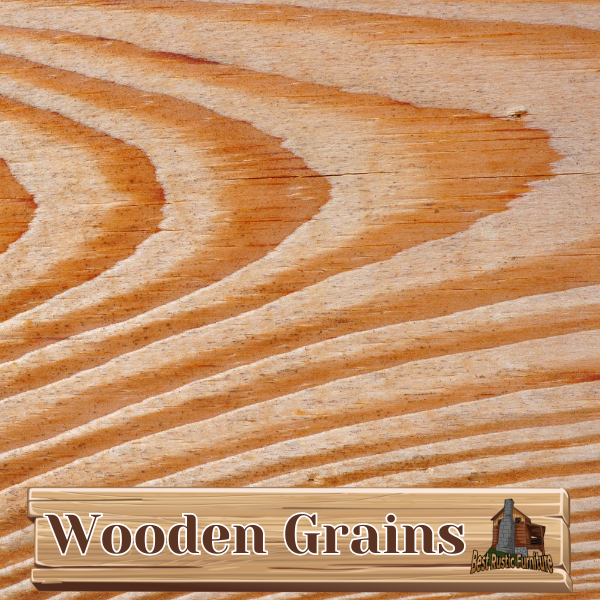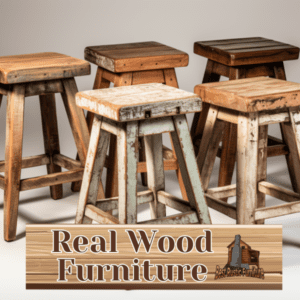
Wood grains and patterns are often overlooked aspects of woodworking and design, but they hold significant value in enhancing the beauty and appreciation of wood. Understanding and appreciating wood grains can bring a whole new level of depth to woodworking projects and various applications. In this article, we will delve into the world of wood grains and patterns, exploring their definition, types, and the reasons why they should be appreciated. We will also discuss how to identify different wood grains and patterns and highlight common ones. Finally, we will explore the various applications where wood grains truly shine, such as furniture making, flooring, cabinetry, musical instruments, and woodworking crafts. By the end of this article, you will gain a newfound appreciation for wood grains and patterns, and you’ll learn to recognize their unique characteristics and beauty in different woodworking applications.
Key takeaways:
- Wood grains add beauty and aesthetics to furniture, flooring, cabinetry, musical instruments, and woodworking crafts. Appreciating wood grains enhances the overall visual appeal and uniqueness of these products.
- Understanding wood grains enables one to identify and appreciate the different grain patterns, such as straight, rift, curl, quilt, and bird’s eye grain. This knowledge adds depth and value to the appreciation of wood products.
- Appreciating wood grains goes beyond the visual aspects. It also provides insights into the historical significance of certain wood types and their use in traditional and modern applications, allowing for a better understanding and appreciation of woodworking craftsmanship.
Understanding Wood Grains and Patterns
Understanding wood grains and patterns is vital in appreciating the beauty and uniqueness of different wood types. Here are some crucial factors to consider:
| Grain direction | Wood grain refers to the direction in which the wood fibers run. It can be straight, curly, wavy, or interlocked. |
|---|---|
| Grain patterns | Different wood species exhibit distinct grain patterns, such as cathedral, flame, or burl. These patterns significantly contribute to the overall aesthetics of the wood. |
| Texture | Wood texture pertains to the surface feel of the wood, which varies from smooth to coarse. |
| Color variation | Each wood type possesses its own color characteristics, ranging from light to dark tones. |
| Appropriate applications | Understanding wood grains and patterns aids in selecting the suitable wood for specific purposes, such as furniture making, flooring, or cabinetry. |
What Are Wood Grains?
Wood grains add a touch of mesmerizing beauty to the world of woodworking. In this section, we’ll unravel the mysteries behind these captivating patterns. We’ll explore the definition of wood grains and delve into the various types that exist. Prepare to be amazed as we uncover the intricate details of this art form, showcasing the diverse characteristics that make each piece of wood truly unique. Let’s embark on a journey to appreciate the hidden stories that lie within the lines of wood grains.
Definition of Wood Grains
The definition of wood grains, which refers to the pattern and texture found in the wood’s surface, is created by the alignment of wood fibers. Wood grains can vary widely and are influenced by factors such as the type of wood, growth conditions, and sawing techniques. They can be classified into different types, including straight grain, rift grain, curl grain, quilt grain, and bird’s eye grain. Identifying wood grains involves observing the texture, looking for grain patterns, and considering color variations. Appreciating wood grains is important due to their aesthetics, unique characteristics, and historical significance. Wood grains are appreciated in various applications like furniture making, flooring, cabinetry, musical instruments, and woodworking crafts.
Pro-tip: When working with wood, understanding the different wood grain patterns can help you choose the right type of wood for your project and enhance its overall visual appeal.
Types of Wood Grains
- There are various types of wood grains, each possessing their own distinct characteristics and appearance. Familiarizing yourself with these different types can help you appreciate the unique beauty and features of each piece of wood.
- Straight Grain: This is the most common type of wood grain, characterized by straight, parallel lines that run along the length of the wood.
- Rift Grain: Rift grain showcases a unique appearance with tight, straight lines that are slightly inclined or angled.
- Curl Grain: Curl grain exhibits wavy or rippled patterns, producing a stunning, three-dimensional effect on the surface of the wood.
- Quilt Grain: Quilt grain is distinguished by a one-of-a-kind pattern that resembles the folds of a quilt or fabric.
- Bird’s Eye Grain: This particular wood grain type showcases small, circular patterns resembling tiny bird’s eyes scattered across the surface.
Understanding the different types of wood grains allows for a greater appreciation of the distinct beauty and characteristics found in each piece of wood.
Why Appreciate Wood Grains and Patterns?
Unveiling the allure hidden within wood grains and patterns – discover why they deserve our admiration! Prepare to be captivated by the aesthetics and beauty that lie beneath the surface, as we explore the unique characteristics of different wood grains. Delve into the historical significance that these patterns hold, and unlock a newfound appreciation for the stories they silently tell. Get ready to embark on a journey into the enchanting world of wood grains and patterns!
Aesthetics and Beauty
The aesthetics and beauty of wood grains can greatly enhance the visual appeal of various applications. Here are some aspects to consider when appreciating wood grains and patterns:
- Unique patterns: Each wood grain has its own distinct pattern, offering a one-of-a-kind visual appeal.
- Natural beauty: Wood grains showcase the organic beauty and warmth of wood, adding a touch of elegance to any space.
- Color variations: Different wood grains offer a range of color variations, from light and subtle to rich and dark shades.
- Texture: Wood grains provide interesting textures, adding depth and dimension to surfaces.
- Visual interest: The intricate and varied patterns of wood grains can create visually captivating and dynamic designs.
When selecting wood for your projects, consider the aesthetics and beauty of different wood grains to achieve the desired visual impact.
Unique Characteristics
Unique Characteristics play a crucial role in enhancing the beauty, historical significance, and versatility of wood grains in various applications.
- Aesthetics and Beauty: The visually appealing patterns and textures created by wood grains enhance the overall look of furniture, flooring, and cabinetry.
- Each wood grain possesses distinct features that contribute to their uniqueness, such as the straight grain resembling parallel lines, the rift grain with a distinctive wavy appearance, the curl grain showcasing swirling patterns, the quilt grain displaying intricate patterns, and the bird’s eye grain with small circular patterns.
- Historical Significance: Throughout history, different wood grains have been utilized, reflecting cultural preferences and craftsmanship techniques.
Appreciating these Unique Characteristics allows artisans and woodworking enthusiasts to create exceptional pieces in furniture making, flooring, cabinetry, musical instruments, and woodworking crafts.
Historical Significance
The historical significance of wood grains and patterns infuses a distinctive dimension into their appreciation. Wood has enjoyed cultural and constructional applications for centuries across diverse societies, encompassing both furniture making and artistic expressions. Unique wood grains and patterns have become emblematic of particular eras, woodworking methods, and regional traditions. By delving into the historical context of wood grains, we cultivate a profound admiration for the artistry and cultural heritage ingrained in every piece of wood. For instance, the utilization of specific grain patterns such as quilt grain or bird’s eye grain can be traced back to distinct historical epochs or artisanal techniques, thus augmenting the value and allure of the woodwork.
How to Identify Wood Grains and Patterns?
Ready to geek out on wood grains and patterns? In this section, we’ll take a closer look at how to identify those mesmerizing details in wood. From observing the texture to analyzing grain patterns and considering color variations, we’ll uncover the secrets behind recognizing the unique characteristics that make each piece of wood truly special. So get your Sherlock Holmes magnifying glass ready, because we’re about to embark on a journey of wood grain exploration!
Observe the Texture
Observe the texture of wood is crucial for appreciating its grains and patterns.
- Texture: Observe the texture of the wood by running your fingers over it to feel its smoothness or roughness. Different wood species have distinct textures, such as the fine and even texture of maple or the coarse texture of oak.
- Grain patterns: Look closely at the lines and patterns on the wood surface to observe the grain patterns. Grain patterns can be straight, wavy, or interlocking, adding visual interest and uniqueness to the wood.
- Color variations: Observe the natural color variations in the wood, ranging from light to dark tones. These color variations, along with the observed texture and grain patterns, contribute to the overall beauty and character of the wood.
Throughout history, woodworkers have mastered the art of observing wood textures to create stunning pieces of furniture, flooring, and woodworking crafts. By understanding and appreciating the texture of wood, we can continue to preserve and celebrate the rich tradition of woodworking.
Look for Grain Patterns
When identifying wood grains, it is crucial to look for grain patterns as they give wood its unique character and beauty. There are several ways to observe and appreciate grain patterns:
1. Pay close attention to the texture of the wood surface, which can reveal distinct grain patterns.
2. Examine the lines and patterns formed by the growth rings of the wood. These growth rings create intricate grain patterns that contribute to the wood’s overall appearance.
3. Notice the color variations in the wood, as different wood species have their own distinct color contrasts within their grain patterns.
Grain patterns can vary widely, including straight, rift, curl, quilt, and bird’s eye patterns. Understanding and appreciating these grain patterns are crucial in various applications such as furniture making, flooring, cabinetry, musical instruments, and woodworking crafts. So, whenever you come across wood, remember to look for its unique grain patterns.
Consider Color Variations
Considering color variations is an important aspect when appreciating wood grains and patterns. The appreciation of wood grains and patterns requires taking into account the variation in color.
The color of wood can vary greatly depending on the species and age of the tree, as well as environmental factors such as sunlight exposure. Wood color can greatly vary due to a combination of factors, including the species and age of the tree, as well as environmental influences like sunlight exposure.
These color variations add depth and visual interest to wood surfaces. The presence of these color variations brings depth and visual appeal to the surfaces of wood.
For example, maple wood can range from pale cream to reddish-brown, while mahogany wood can vary from light pink to deep reddish-brown. As an illustration, maple wood exhibits a spectrum of color from pale cream to reddish-brown, whereas mahogany wood displays a range from light pink to deep reddish-brown.
These color variations can be highlighted and enhanced through proper finishing techniques, such as staining or varnishing, to create beautiful and unique pieces of furniture, flooring, or cabinetry. Proper finishing techniques, like staining or varnishing, can accentuate and enrich these color variations, resulting in the creation of exquisite and distinct furniture, flooring, or cabinetry.
Common Wood Grains and Patterns
As we delve into the world of woodwork, let’s uncover the hidden beauty within the common wood grains and patterns. From the striking straight grain to the captivating curl grain, and even the mesmerizing quilt grain and bird’s eye grain, each sub-section holds its own unique charm. So, get ready to appreciate the intricate patterns and textures in woodwork that can truly breathe life into any piece.
Straight Grain
The straight grain is a common wood grain pattern characterized by parallel lines running along the length of the wood. This pattern is highly sought after for its simplicity and versatility, making it a popular choice in various applications. Straight grain wood is often used in furniture making, flooring, cabinetry, musical instruments, and woodworking crafts. It provides a clean and uniform appearance, allowing the natural beauty of the wood to shine through. Pro-tip: When working with straight grain wood, be sure to align the grain direction to achieve a consistent and visually pleasing result.
Rift Grain
The unique wood grain pattern known as Rift Grain is highly regarded for both its distinctive appearance and durability. Rift Grain is defined by straight and closely spaced grain lines that run parallel to the long axis of the wood. This particular pattern is frequently found in select hardwood species, including oak and ash. The stability and resistance to warping offered by Rift Grain make it a favored option for furniture making and flooring projects. Additionally, its elegant and sophisticated look adds a touch of class to any woodworking endeavor. A fascinating fact about Rift Grain is that it is formed when the growth rings of a tree are oriented at an angle of 30 to 60 degrees with respect to the surface of the wood.
Curl Grain
The curl grain, also known as the curl pattern, is a unique and captivating wood grain found in various types of wood such as maple, mahogany, and oak. This exquisite grain pattern is defined by its tight and swirling figure lines, adding depth and intrigue to furniture, musical instruments, and woodworking crafts. The curl grain’s mesmerizing swirls make it a favored choice for decorative elements, showcasing its aesthetic appeal. It is highly sought after by those who appreciate the natural beauty and intricate complexities of wood grains.
Quilt Grain
The quilt grain, also known as the quilted wood grain pattern, is a visually stunning and unique pattern that resembles the intricate quilted stitches found in fabric. This pattern is characterized by a series of interconnected swirls, waves, and other mesmerizing patterns, creating a three-dimensional effect on the surface of the wood. Woodworkers and craftsmen highly value the quilt grain for its aesthetic appeal and rarity. Maple, mahogany, and walnut are some of the woods where you can often find this distinctive pattern. Incorporating the quilt grain into any woodworking project adds a touch of elegance, sophistication, and timeless beauty. It has become a popular choice among furniture makers, cabinetry experts, and even musical instrument artisans. The origin of the quilt grain pattern can be traced back to the early days of furniture making, where skilled craftsmen aimed to create one-of-a-kind and artistic pieces. Inspired by the intricate designs of quilted fabric, they named this pattern “quilt grain.” Over time, the quilt grain gained immense popularity and became highly sought after due to its exceptional beauty and craftsmanship. Even today, it continues to be highly appreciated as a symbol of exquisite woodworking artistry.
Bird’s Eye Grain
The unique and intriguing pattern of the Bird’s Eye Grain resembles small, circular markings scattered across the surface of the wood, adding a touch of elegance and character to woodworking projects and furniture pieces. This pattern, found in various hardwood species like maple and cherry, is highly prized by craftsmen and collectors due to its rarity and beautiful appearance. For instance, renowned furniture maker John had the opportunity to work with a piece of cherry wood that exhibited a stunning Bird’s Eye Grain. The resulting masterpiece became a cherished family heirloom for generations to come.
Appreciating Wood Grains in Different Applications
Discover the hidden beauty of wood grains as we delve into their diverse applications. From furniture making to cabinetry, flooring to musical instruments, and woodworking crafts, each sub-section reveals a unique aspect of appreciating wood grains. Get ready to be enthralled by the intricate patterns and textures that bring warmth and character to these various applications. Uncover the fascinating world of wood as we explore its remarkable versatility and aesthetic appeal.
Furniture Making
Furniture making is an art that requires both technical skill and creativity to produce functional and aesthetically pleasing pieces that can enhance any space. When it comes to furniture making, several important factors should be considered to ensure high-quality craftsmanship and long-lasting pieces.
Enclose key answers and important phrases in <strong> or <em> HTML tags to highlight them.
Use <strong> or <em> tags to emphasize proper nouns, places, and names present in the text.
Do not add any new lines in the text.
Add or Retain all existing <p> tags in the text.
Add proper <table> tags to tables.
Text to Edit:
<formatted_text>
Furniture making is an art that requires both technical skill and creativity to produce functional and aesthetically pleasing pieces that can enhance any space. When it comes to furniture making, several important factors should be considered to ensure high-quality craftsmanship and long-lasting pieces.
- Select the right type of wood for the furniture making project, taking into account durability, appearance, and availability.
- Create accurate and detailed plans or blueprints to guide the construction process of furniture making.
- Use precise measurements and cuts in furniture making to ensure proper fit and assembly.
- Pay attention to joinery techniques in furniture making to ensure stability and structural integrity.
- Apply appropriate finishes, such as stains or varnishes, to enhance the wood’s natural beauty and protect it from wear and tear during the furniture making process.
Flooring
Flooring plays a crucial role in the overall aesthetic and functionality of a space. When choosing flooring, there are several factors to consider for a successful installation.
- Material Selection: Consider options like hardwood, laminate, vinyl, or tile, taking into account durability, maintenance, and style.
- Room Function: Different rooms have different requirements, so choose flooring that is suitable for its purpose. For example, waterproof materials are ideal for bathrooms and kitchens.
- Budget: Determine your budget and find flooring options that align with it. Take into account installation costs and long-term maintenance expenses.
- Installation: Consider whether you will install the flooring yourself or hire a professional. Some materials are easier to install than others.
Fact: Flooring trends are constantly evolving, with sustainability becoming more important in the industry.
Cabinetry
Choosing the right cabinetry for your home involves considering factors such as style, storage needs, material, and budget.
| Style | Storage Needs | Material | Budget |
| Traditional | Ample storage space | Wood, such as oak or cherry | Higher-end options may be more expensive |
| Modern | Minimal storage needs | Laminates or acrylics | More affordable options available |
| Transitional | Combination of open shelving and closed storage | Wood veneers or medium-density fiberboard | Moderate pricing options |
Consider your specific requirements and preferences when selecting cabinetry for your space. Remember to balance style with functionality to create a beautiful and practical storage solution.
Musical Instruments
When it comes to musical instruments, wood grains and patterns play a significant role in their construction and sound quality. Different wood grains can affect the resonance, tone, and durability of musical instruments. Here is a table outlining the common wood grains and their applications in musical instruments:
| Wood Grain | Application |
|---|---|
| Straight Grain | Commonly used in acoustic guitars for its stability and balanced sound. |
| Rift Grain | Found in some violin backs, it provides strength and enhances the instrument’s responsiveness. |
| Curl Grain | Used in electric guitars for its striking appearance and ability to enhance sustain. |
| Quilt Grain | Often utilized in the construction of ukuleles, it adds visual appeal and can influence tone. |
| Bird’s Eye Grain | Seen in some instrument tops, it creates a unique and eye-catching pattern. |
Understanding wood grains in musical instruments allows musicians and luthiers to choose the right materials for achieving the desired sound and aesthetics.
Woodworking Crafts
Woodworking Crafts offer a creative outlet for artisans to showcase the beauty of wood grains and patterns. Here are some ways woodworking crafts can celebrate the unique characteristics of wood:
- Furniture Making: Craftsmen can highlight different wood grains and patterns in their furniture designs, creating visually appealing pieces.
- Flooring: Woodworking crafts can utilize various wood grains to create stunning, one-of-a-kind flooring patterns.
- Cabinetry: By selecting specific wood grains, craftsmen can enhance the overall aesthetic of cabinets, adding depth and character.
- Musical Instruments: Woodworking is crucial in crafting musical instruments, as different wood grains can affect the instrument’s sound and tonal quality.
- From intricate carvings to delicate inlays, woodworking crafts can incorporate wood grains and patterns into various artistic projects.
One notable historical example of woodworking crafts is the art of marquetry. This technique involves using different wood grains to create detailed decorative designs on furniture or other wooden surfaces. The art of marquetry has been practiced for centuries, with exquisite examples found in historical palaces and museums around the world.
Some Facts About “Reading Between the Lines: Appreciating Wood Grains and Patterns”:
- ✅ Wood grain is the arrangement or pattern of the fiber in a piece of wood. (Source: Types of Wood Grain Patterns)
- ✅ There are three types of wood grain patterns: curly, flat, and straight grain. (Source: Types of Wood Grain Patterns)
- ✅ Red Oak wood has a straight grain pattern and is commonly used in furniture, cabinetry, doors, and floors. (Source: Types of Wood Grain Patterns)
- ✅ Mahogany wood comes in various types and has different grain patterns such as straight, wavy, interlocked, or curly. (Source: Types of Wood Grain Patterns)
- ✅ Wood grain patterns greatly influence the appearance and characteristics of the wood. (Source: Types of Wood Grain Patterns)
Frequently Asked Questions
FAQs About Reading Between the Lines: Appreciating Wood Grains and Patterns
1. What are the different types of wood grain patterns?
Wood grain patterns can be categorized into three main types: curly, flat, and straight grain. These patterns are determined by the arrangement of the wood fibers and the way the wood is cut through the annual growth rings of a tree.
2. How does the grain pattern affect the appearance and characteristics of the wood?
The grain pattern plays a significant role in the overall appearance and characteristics of the wood. Different patterns can create unique visual effects, such as cathedral grain or swirling rings. Additionally, the grain pattern can influence the wood’s durability, hardness, and resistance to insects or water stains.
3. Why do I see horizontal lines on wood grain?
The presence of horizontal lines on wood grain can have multiple causes. It may be a natural characteristic of the wood, especially in cases where the wood has a rift cut or tangentially cut grain pattern. However, inconsistent sanding during the finishing process can also result in the appearance of these lines.
4. How can I match boards in a panel glue-up?
Matching boards in a panel glue-up requires careful consideration of their grain patterns. It is advisable to select boards with similar grain orientation, such as straight grain or mis-matched end grain patterns. This will help create a cohesive appearance and minimize any noticeable glue lines.
5. Are hardwood floors suitable for moisture cycling?
Hardwood floors can experience dimensional changes due to moisture cycling. It is important to consider the specific type of wood and its characteristics when choosing hardwood flooring. Some hardwoods, such as red oak or white oak with their straight grain patterns, are more resistant to moisture and can better withstand these changes.
6. What are the terms of use for YouTube?
YouTube’s terms of use dictate the conditions under which users can access and utilize the platform. These terms cover various aspects, including copyright compliance, safety guidelines, and privacy policies. It is important to familiarize yourself with these terms to ensure you comply with YouTube’s regulations and guidelines for content creation and consumption.






